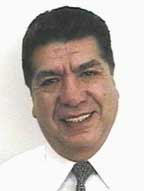Selected Works of Sergio Jiménez, MD, MACR
Identification of elements in the promoter region of the alpha1(I) procollagen gene involved in its up-regulated expression in systemic sclerosis
Elena G. Hitraya, Thomas Jefferson University; John Varga, University of Illinois at Chicago; Carol M. Artlett, Thomas Jefferson University; and Sergio A. Jimenez, Thomas Jefferson University
DATE: January 1998
SOURCE: Arthritis & Rheumatism, 41():2048-2058
RELATED URL: http://www3.interscience.wiley.com/journal/85008842/abstract
ABOUT THIS DOCUMENT:
This article is available only from the publisher's website.
ABSTRACT:
OBJECTIVE: To identify regulatory elements in the promoter region of the alpha1(I) procollagen gene (COL1A1) involved in the transcriptional activation of this gene in systemic sclerosis (SSc), and to identify the transcription factors interacting with these regulatory elements.
METHODS: Dermal fibroblasts from 6 patients with diffuse SSc of recent onset and from 6 healthy individuals were studied. The transcriptional regulation of COL1A1 was examined by transient transfections with deletion constructs containing portions of the COL1A1 promoter. The DNA binding activity of nuclear proteins recognizing the regulatory regions in the COL1A1 promoter was examined by gel mobility shift assays. A procedure was established to allow the quantitative determination of the amount of DNA binding proteins interacting with the COL1A1 promoter, employing DNA binding protein and DNA titration experiments analyzed by gel mobility shift assays.
RESULTS: Maximal chloramphenicol acetyltransferase activity was observed with a -174-bp to +42-bp COL1A1 promoter construct in both normal and SSc cells; however, the activity driven by this construct was 70-260% higher in SSc fibroblasts. Most of the transcriptional activity of the COL1A1 promoter was contained in a minimal promoter region encompassing -174 bp to -84 bp. Electrophoretic mobility shift assays performed with oligonucleotides corresponding to the regions spanning -129/-107 bp and -104/-78 bp of the COL1A1 promoter revealed marked increases in the intensities of DNA-protein complexes formed with both oligonucleotides in nuclear extracts prepared from each of the SSc cell lines in comparison with normal fibroblasts. Competition experiments showed that each of these regions contained elements recognized by Sp1 and nuclear factor 1 (NF-1) binding proteins. A quantitative determination of DNA binding activity recognizing the Sp1 binding element within the -129/-107-bp region showed that it was 23.6 nM in SSc fibroblasts compared with 6.9 nM in normal fibroblasts.
CONCLUSION: The results demonstrate that a short region in the proximal promoter of COL1A1 containing 2 tandem NF-1/Sp1 elements displays up-regulated transcriptional activity in SSc fibroblasts, and that SSc fibroblasts contain 3.4-fold greater DNA binding activity recognizing these elements than normal cells.

